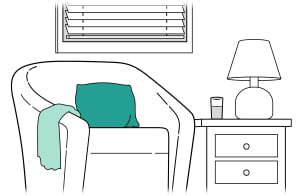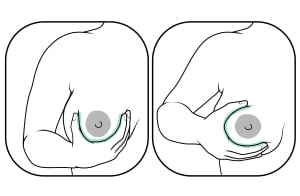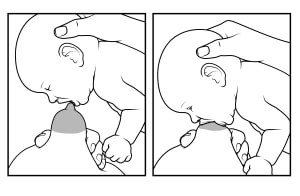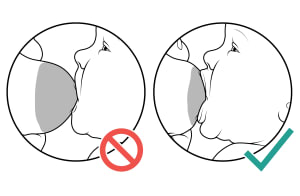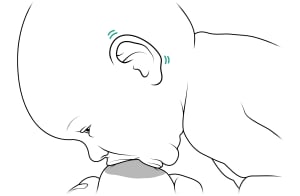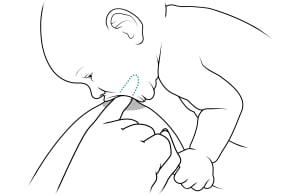Overview
Breastfeeding is feeding a baby milk from your breasts. You can also pump your breasts and put the milk in a bottle to feed your baby. Breast milk is the only food that babies need for the first 6 months of life. At around 6 months of age, you can start slowly adding other foods, such as cereal, while your baby continues to breastfeed.
Experts such as the American Academy of Pediatrics (AAP) recommend feeding your baby only breast milk for about 6 months. They also support breastfeeding for 2 years or longer.footnote 1 But your baby benefits from any amount of time that you breastfeed. Try to breastfeed for as long as it works for you and your baby.
Breastfeeding has many benefits. It may lower your baby's chances of getting an infection. It also may make it less likely that your baby will have problems such as diabetes and obesity later in life. Breastfeeding also helps you bond with your baby.
In the first days after birth, your breasts make a thick, yellow liquid called colostrum. This liquid gives your baby nutrients and antibodies against infection. It's all that babies need in the first days after birth. Your breasts will fill with milk a few days after the birth.
Breastfeeding is a skill that gets better with practice. Be patient with yourself and your baby. If you have trouble, you can get help and keep breastfeeding.
How can you prepare for breastfeeding?
The more you prepare and learn about breastfeeding now, the more likely it will go well. So talk to your doctor or midwife, and ask questions now. Take a class to learn about breastfeeding and how it's done best. And ask about lactation consultants at your hospital or birthing center.
How often should you breastfeed?
Plan to breastfeed your baby on demand rather than setting a strict schedule. For the first 2 weeks, be prepared to breastfeed at least 8 times in a 24-hour period. In the first few days, you may need to wake a sleeping baby to feed. If you breastfeed more often, it will help your breasts produce more milk.
By 2 months, most babies have a set feeding routine. But your baby's routine may change at times, such as during growth spurts when your baby may be hungry more often.
At around 3 months of age, your baby may breastfeed less often. That's because your baby is able to drink more milk at one time. Your milk supply will naturally increase as your baby needs more milk.
What should you know about your first feeding?
It's best to start breastfeeding within 1 hour of birth. For each feeding, you go through these basic steps:
- Get ready for the feeding. Be calm and relaxed, and try not to be distracted. Get some water or juice for yourself. Use two or three pillows to help support your baby while nursing.
- Find a breastfeeding position that is comfortable for you and your baby. Examples are the cradle and the football positions. Make sure the baby's head and chest are lined up straight and facing your breast. It's best to switch which breast you start with each time.
- Get the baby latched on well. Your baby's mouth needs to be wide open, like a yawn. So you may need to gently touch the middle of your baby's lower lip. When your baby's mouth is open wide, quickly bring the baby onto your nipple and areola. The areola is the dark circle around your nipple.
- Provide a complete feeding. Let your baby decide how long to nurse. Be sure to burp your baby after each breast.
In the first days after birth, your breasts make a thick, yellow liquid called colostrum. This liquid gives your baby nutrients and antibodies against infection. It is all that babies need at first. Your breasts will fill with milk a few days after the birth.
Talk to your doctor, midwife, or lactation specialist right away if you are having problems and aren't sure what to do.
Does your baby need extra vitamins or minerals?
Doctors sometimes prescribe vitamin or iron drops for newborns. These drops help babies get the nutrition they need.
It's fairly common for a baby to need:
- Extra iron. Babies born early haven't had enough time to build up an iron supply before birth. So they usually get extra iron for the first few months after birth.
- Extra vitamin D. Breast milk does not have a lot of vitamin D. Many doctors prescribe vitamin D drops for babies who are breastfed. And formula-fed babies who might not be eating enough may also get vitamin D drops.
If you have questions, talk with your doctor about what is right for your baby.




